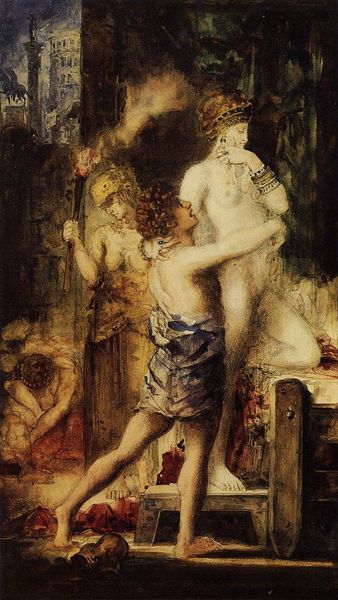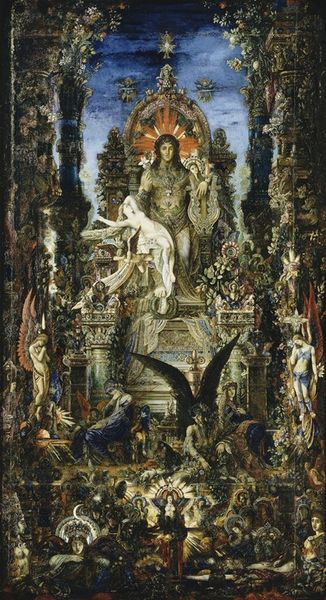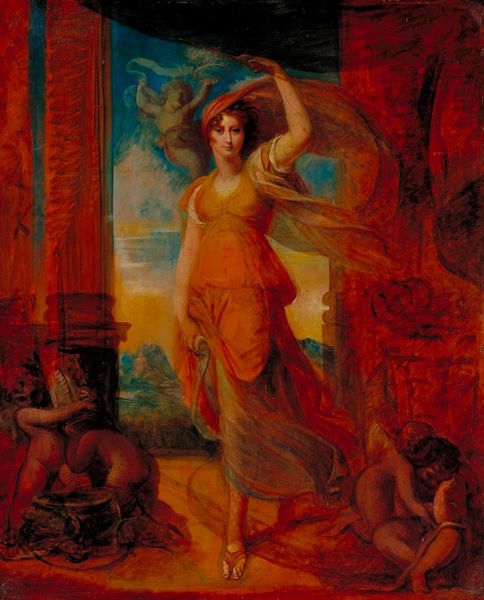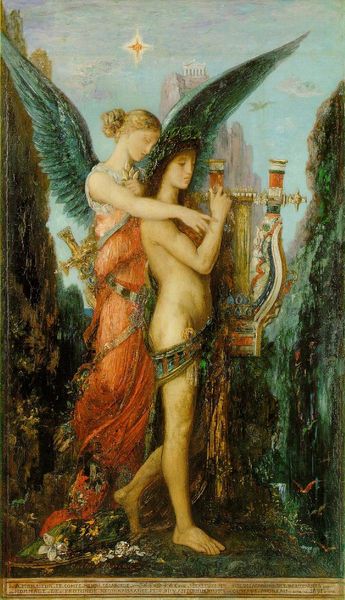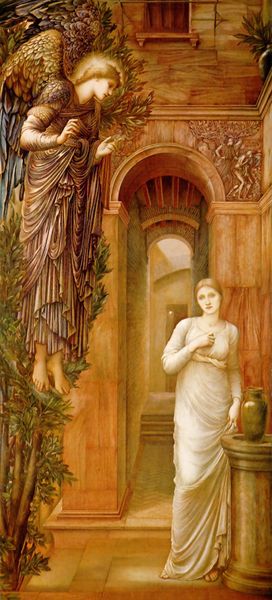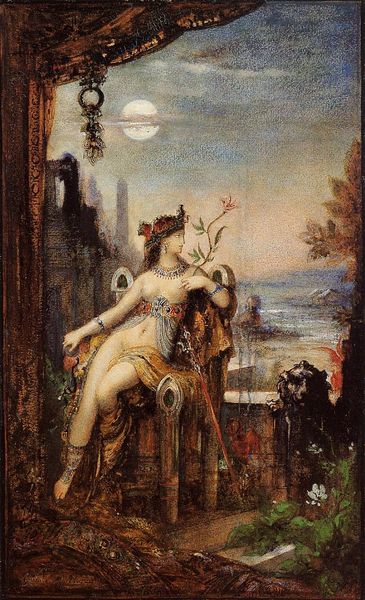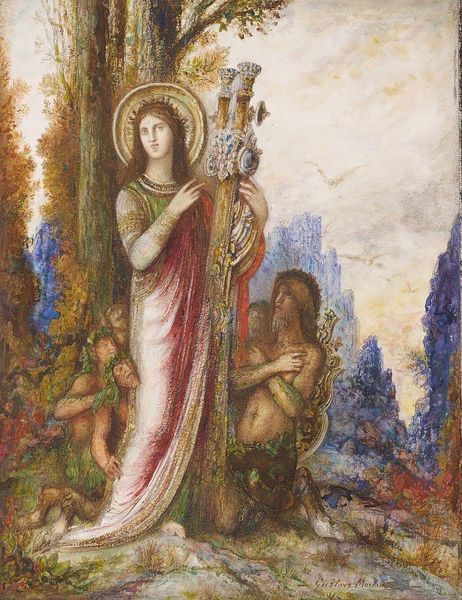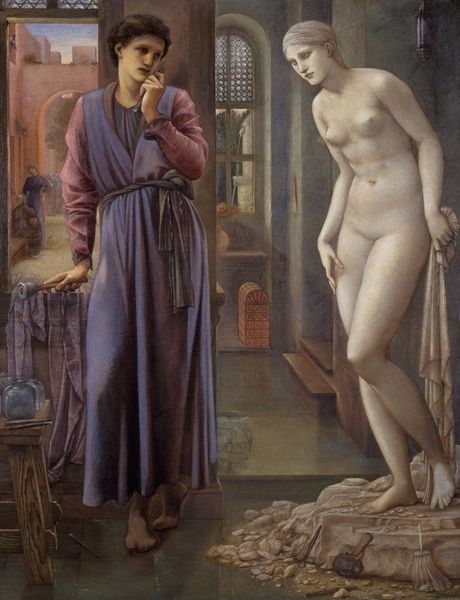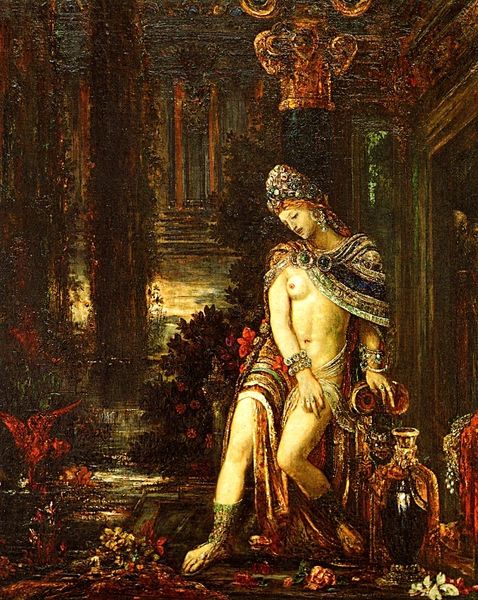
Dimensions: 99.5 x 154 cm
Copyright: Public domain
Gustave Moreau painted 'Orestes and the Erinyes' in the late 19th century, capturing a pivotal moment from Greek tragedy. Orestes is haunted by the Erinyes, ancient goddesses of vengeance, for his matricide. Here, the serpent is a central motif, entwined around the altar, symbolizing primal instincts and the chthonic forces driving the cycle of revenge. We can trace the serpent's presence far back to ancient Mesopotamia, where it represented both healing and chaos. In ancient Greece, it was associated with the underworld and divine knowledge. Notice how Moreau uses the serpent to evoke a sense of lurking danger and psychological torment, embodying the inescapable weight of Orestes' guilt. The goddesses' red halos suggest the fervor of their pursuit, a raw, visceral energy that speaks to our subconscious fears and the relentless nature of guilt. These symbols create a visual language, that has a cyclical progression. From ancient myths to modern interpretations, they highlight a continuous dialogue between past and present, revealing the enduring power of images to reflect and shape our understanding of human experience.
Comments
No comments
Be the first to comment and join the conversation on the ultimate creative platform.
